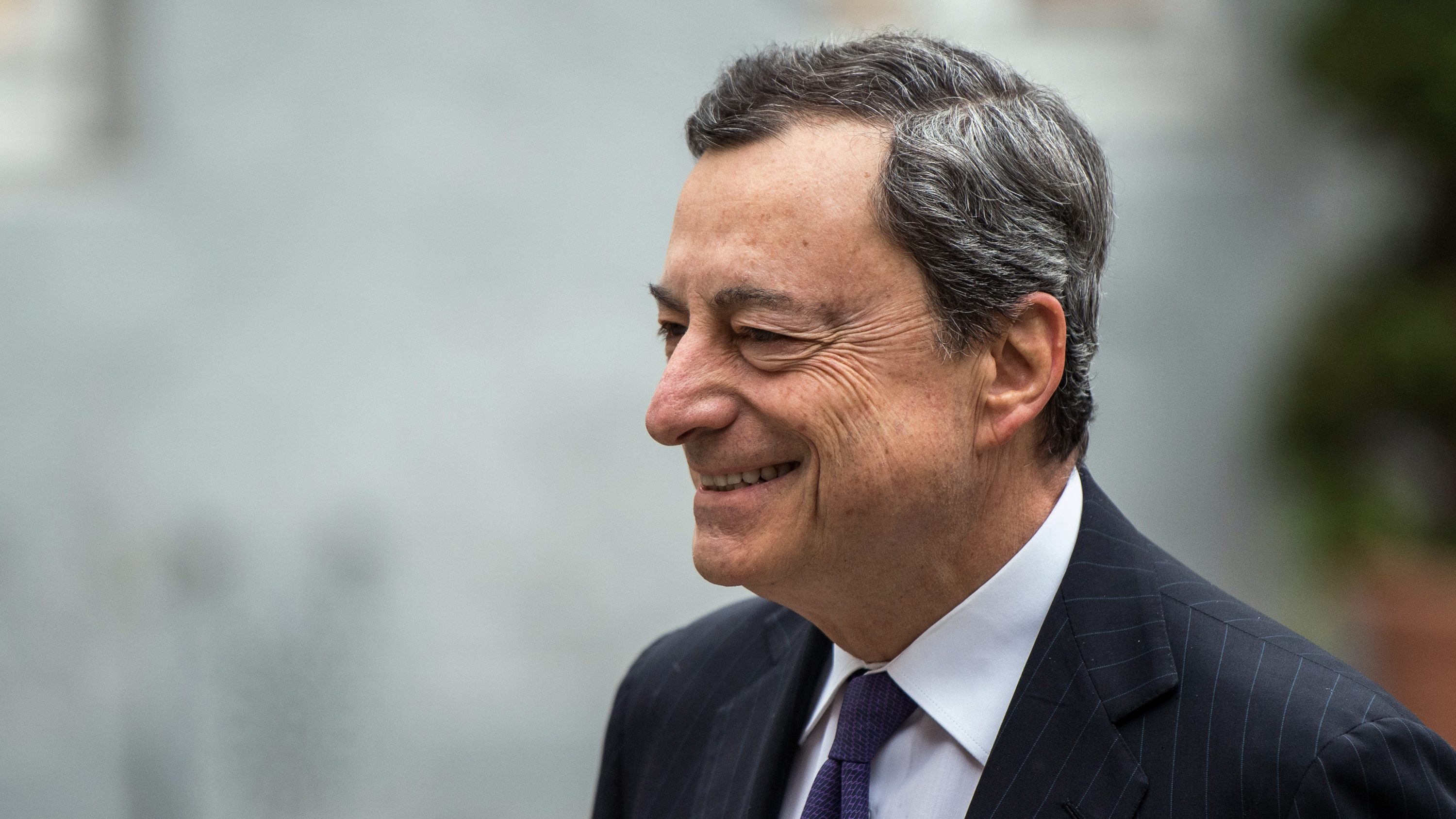Friends, Romans …
As Italy’s new prime minister, Mario Draghi, PhD ’77, will try to lead his country out of brutal economic and health crises.

Italy’s prime minister lives in the Palazzo Chigi, an imposing structure with a direct view of one of Rome’s ancient treasures, the Column of Marcus Aurelius. Now, in 2021, the building’s new resident is an MIT graduate.
That would be Mario Draghi, PhD ’77, who in early February successfully formed a governing coalition after extensive negotiations with parties across Italy’s political spectrum. Draghi, 73, a native of Rome, is best known for his stellar turn as president of the European Central Bank from 2011 to 2019. Vowing to do “whatever it takes” to save the euro as a common currency, Draghi steered away from a strict commitment to austerity, instead cutting interest rates and developing debt-relief programs that helped a variety of European countries, including France, Italy, and Spain, vastly improve their fiscal outlooks.
Draghi has a wealth of high-level governing experience: before becoming ECB president, he was governor of the Bank of Italy and, before that, director general of the Italian Treasury. All that success is built on a strong intellectual foundation. As an MIT doctoral student in economics, Draghi studied with Franco Modigliani, an Italian compatriot and Nobel laureate.
“Mario Draghi was a delight both as a student and as a person, and he was a great governor of the European Central Bank, often standing alone,” recalls Professor Robert Solow, who served as one of his informal graduate advisors at MIT (and is another Nobel laureate). “I wish him luck now—he will need it.”
As it happens, Draghi’s PhD dissertation addresses the trade-offs between short-term and long-term economic planning. That’s a subject he may find himself again immersed in soon, as he attempts to lead Italy out of a brutal recession and the covid-19 crisis at the same time. Turning Italy around won’t be easy; the Financial Times has called Draghi’s new task “Herculean.” Even if Draghi succeeds, he won’t be celebrated with a commemorative victory column—but this Roman could yet leave his own lasting mark on history.
Keep Reading
Most Popular
Large language models can do jaw-dropping things. But nobody knows exactly why.
And that's a problem. Figuring it out is one of the biggest scientific puzzles of our time and a crucial step towards controlling more powerful future models.
How scientists traced a mysterious covid case back to six toilets
When wastewater surveillance turns into a hunt for a single infected individual, the ethics get tricky.
The problem with plug-in hybrids? Their drivers.
Plug-in hybrids are often sold as a transition to EVs, but new data from Europe shows we’re still underestimating the emissions they produce.
Google DeepMind’s new generative model makes Super Mario–like games from scratch
Genie learns how to control games by watching hours and hours of video. It could help train next-gen robots too.
Stay connected
Get the latest updates from
MIT Technology Review
Discover special offers, top stories, upcoming events, and more.